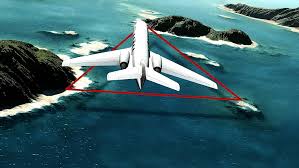The ocean is a vast and largely unexplored realm, covering about 71% of the Earth’s surface. Despite our advancements in technology and exploration, the ocean still holds countless secrets, with its depths being the most mysterious of all. Among the many questions about the ocean, one that stands out is: What is the deepest part of the ocean? The answer leads us to a place of extreme pressure, complete darkness, and fascinating discoveries — the Challenger Deep in the Mariana Trench.
Understanding Ocean Depths
Before diving into the specifics of the Challenger Deep, it’s important to understand how ocean depth is measured. The ocean is divided into different zones based on depth:
-
Epipelagic Zone (0-200 meters): Also known as the sunlight zone, this is where most marine life lives.
-
Mesopelagic Zone (200-1,000 meters): Known as the twilight zone, light starts to fade here.
-
Bathypelagic Zone (1,000-4,000 meters): The midnight zone; no sunlight reaches this depth.
-
Abyssopelagic Zone (4,000-6,000 meters): Known as the abyss, home to very few life forms.
-
Hadalpelagic Zone (6,000-11,000 meters): Found in deep ocean trenches like the Mariana Trench.
It is in the Hadalpelagic Zone that the deepest known part of the ocean resides.
The Mariana Trench: The Ocean’s Deepest Canyon
The Mariana Trench is located in the western Pacific Ocean, to the east of the Mariana Islands. It stretches over 2,550 kilometers (1,580 miles) long and 69 kilometers (43 miles) wide, making it the deepest oceanic trench on Earth.
The Challenger Deep, found at the southern end of the Mariana Trench, is the lowest known point in Earth’s seabed. It reaches a depth of approximately 10,984 meters (36,037 feet), though various measurements range slightly due to different survey methods. To put that in perspective, if Mount Everest were placed into the Challenger Deep, its peak would still be over 2,000 meters below the ocean surface.
The Challenger Deep: Gateway to the Abyss
The Challenger Deep is named after the HMS Challenger, a British naval ship that conducted the first global marine research expedition from 1872 to 1876. During this expedition, scientists used a weighted sounding rope to measure ocean depths and discovered the trench that would later bear its name.
Since then, the Challenger Deep has fascinated explorers, scientists, and even filmmakers. Despite the enormous technical challenges, a few daring missions have reached the bottom:
-
1960 – Trieste Mission: Swiss oceanographer Jacques Piccard and U.S. Navy Lieutenant Don Walsh became the first humans to reach the Challenger Deep in the bathyscaphe Trieste. They descended to about 10,911 meters, and stayed for around 20 minutes.
-
2012 – Deepsea Challenger: Famed filmmaker James Cameron made a solo descent in a specially designed submersible, the Deepsea Challenger. His mission not only proved human endurance at extreme depths but also gathered valuable scientific data.
-
2019 Onwards – DSV Limiting Factor: Victor Vescovo, a private explorer, completed multiple dives to the Challenger Deep in a specially built submersible, DSV Limiting Factor. His expedition helped map more of the trench and revealed fascinating new species.
What Lies at the Bottom?
You might think that such a hostile environment — with pressures over 1,000 times that at sea level, total darkness, and near-freezing temperatures — would be lifeless. But life does exist at the ocean’s deepest points.
Scientists have discovered extremophiles, organisms that thrive in extreme conditions, including bacteria, amphipods (tiny shrimp-like creatures), and other unique invertebrates. These creatures have evolved to withstand intense pressure and survive on minimal resources, primarily feeding on marine snow — decaying organic material that drifts down from upper layers.
Some of the most surprising findings include:
-
Microbial mats that live off chemicals in the sediment.
-
Amphipods with unique adaptations for deep-sea living.
-
Plastic debris, a tragic reminder of how human pollution reaches even the remotest places.
Challenges in Exploring the Deepest Point
Reaching the deepest part of the ocean is no easy feat. Some of the challenges include:
-
Extreme Pressure: At over 10,000 meters, the pressure is more than 1,000 times that at sea level. Any submersible must be incredibly strong to withstand this.
-
Communication Difficulties: Radio waves don’t travel well underwater, especially at such depths, making remote control and communication difficult.
-
Navigation: GPS signals don’t reach the ocean floor. Underwater navigation must rely on sonar and inertial systems.
-
Cost: Deep-sea exploration is incredibly expensive, limiting how often it’s done.
Why Explore the Deep Ocean?
Understanding the deepest parts of the ocean is not just about breaking records or satisfying human curiosity. It plays a crucial role in:
-
Scientific Discovery: New species and geological features can be studied.
-
Climate Research: Deep ocean currents and carbon storage are vital to understanding climate change.
-
Medical Innovation: Extremophiles may provide clues for developing new antibiotics or treatments.
-
Geological Insights: Studying tectonic activity at trench zones can help predict earthquakes and tsunamis.
The Future of Deep-Sea Exploration
With technological advancements, deep-sea exploration is becoming more feasible. Autonomous underwater vehicles (AUVs), remotely operated vehicles (ROVs), and improved manned submersibles are helping scientists explore these remote regions more safely and frequently.
In recent years, international collaborations have led to better mapping of the trench using sonar and satellite data. Scientists hope to eventually map the entire ocean floor by 2030 under the Seabed 2030 project.
Conclusion
The Challenger Deep in the Mariana Trench remains the deepest known part of the ocean, a place of awe-inspiring pressure, darkness, and mystery. While only a handful of people have ever reached these depths, the information gathered has significantly expanded our understanding of the Earth’s final frontier.
Exploring the deepest parts of the ocean is more than a human challenge — it’s a window into the most extreme, untouched ecosystems on the planet. As we continue to explore the deep, who knows what other mysteries lie hidden beneath the waves?
